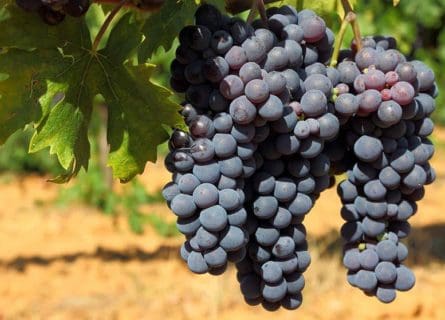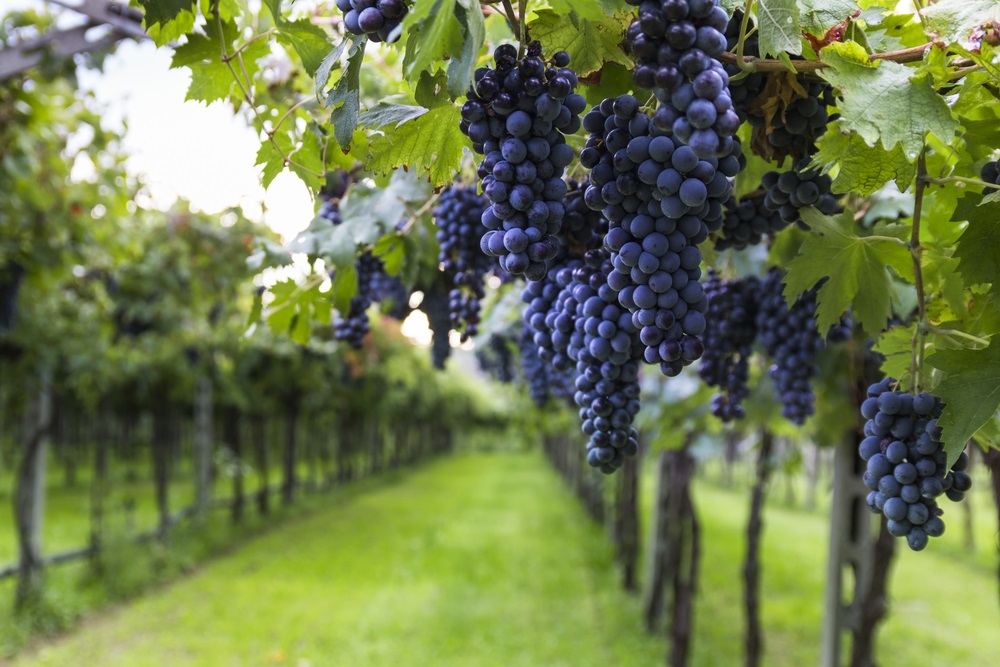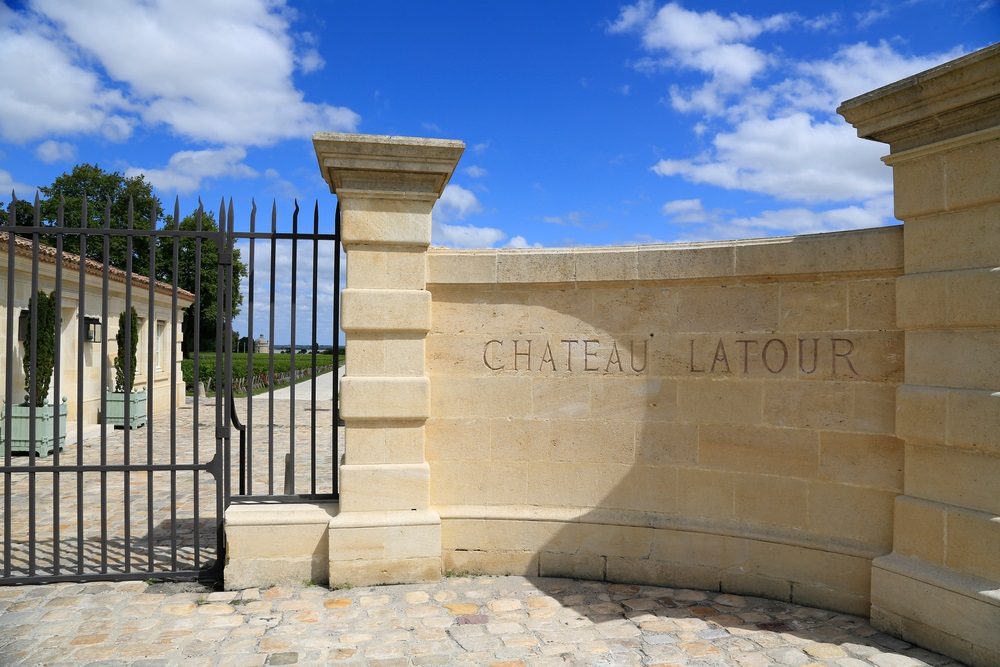
Frappato Grape Variety: A Sicilian Treasure
November 6, 2021
Explore Sicily's Frappato grape, a hidden gem known for its delicate charm, refreshing acidity, and distinctive flavors of berries and violets
By: James lawrence / Last updated: February 3, 2025
Estimated reading time: 1 minute
The world of wine is far more than simply a numbers game. Instead, it champions the familiar and esoteric, with hundreds of obscure European grape varieties. In terms of volume, these varieties may be responsible for only a few thousand bottles of wine per year. Yet growers continue to cherish them despite the onward march of globalization, coupled with constant pressure to sell varietals that consumers know and love.

Guide to French Red Wine: Read more
But if oenophiles reach for a familiar red grape variety (and there’s nothing wrong with that!), they inevitably find themselves drinking Cabernet Sauvignon. The world’s most popular – and planted – red grape is a welcome feature of every major quality-focused wine country, from Italy to Australia. Experts believe there are over 850,000 acres globally, covering about 5% of the total global vineyard area. For example, almost every luxury wine brand in California markets a Cabernet Sauvignon wine – a single varietal or Bordeaux blend. Its popularity with winemakers is easy to understand; relatively easy to grow, Cabernet Sauvignon will produce exceptional and long-lived red wine in various climates and soil types.
Moreover, it is not fussy, adapting to the vineyard conditions of Sonoma, Stellenbosch, Mendoza, and even Ningxia in central China. As a result, it is responsible for some of the most expensive red wines in the world, including Bordeaux’s Château Latour, Napa’s Screaming Eagle, and Tuscany’s Ornellaia. However, few would challenge the notion that Bordeaux-grown Cabernet Sauvignon is in a league of its own.
Cabernet Sauvignon has been cultivated in the Bordeaux region for centuries, and its importance was established in the mid-1800s. Indeed, in the late 18th century, over 30 red varieties were planted in the Right Bank, while Carmenere, Malbec, and Cabernet Franc were prolific in the Medoc. In addition, hybrid varieties (genetic crossings of European and American vine species) were not uncommon in the vineyards of Margaux and Pauillac.
Then phylloxera happened. This devastating louse that arrived from US vines destroyed vineyards throughout the wider Bordeaux region. The solution was to graft European vines onto American rootstock, which saved the industry from decimation in the early 19th century. However, the number of grapes in Bordeaux was significantly reduced, partly because not every variety would tolerate being grafted. When the land was being replanted, it was inevitable that growers would select grapes that could tolerate the inclement weather that routinely defined late summer/early autumn in South-West France and would ripen successfully—Cabernet Sauvignon’s moment had arrived.
By the mid-1800s, Cabernet Sauvignon was established as the most important variety on the Left Bank. Borrowing its etymology from the French word ‘sauvage’ (wild), many believe that Cabernet has ancient origins, dating back to the Roman conquest of Gaul. Some have suggested that it is the modern-day name for Biturica, a grape referenced by the Roman poet Pliny, the Elder. Others believe Cabernet was a Spanish import from the Rioja region many centuries ago.
As ever, the scientific community has done much to help solve the mystery of Cabernet’s origins. Research undertaken at the University of California at Davis determined in 1998 that Cabernet Sauvignon is the genetic offspring of Cabernet Franc and white grape Sauvignon Blanc. This somewhat debunks the Spanish theory, indicating that the noble red grape of Bordeaux probably owes its origins to France. Cabernet Franc and Sauvignon Blanc vines interbred at some point in the past, resulting in Cabernet Sauvignon. In 2016, the university achieved another milestone, sequencing a draft of the grape’s entire genome. This was the first time the genome of a major wine-producing grape had been sequenced.
When discussing the relative merits of Cabernet Sauvignon, growers will always tell you the same thing: this grape is the antithesis of fussy (we’re looking at you, Pinot Noir!). Resistant to most grapevine diseases – powdery mildew is an exception – Cabernet thrives in maritime and warm climates; Bordeaux and Napa Valley are the two most important global examples. Although the resulting wine style will understandably vary in body, alcohol, and ripeness, Cabernet produces consistently high-quality wines in many terroirs, ranging from the gravel of Pauillac to the alluvial loam of Napa.
However, if the climate is too cool, Cabernet will struggle to ripen, yielding herbaceous wines with bitter tannins. At the opposite end of the spectrum, Cabernet Sauvignon can suffer from a high pH, the inevitable tedium of stewed fruit aromas, and a lack of acidity in hot climates. It is perfectly drinkable, to be sure. But such ‘cooked’ wines seldom excite the palate.
The same cannot be said of Cabernet Sauvignon grown in the Medoc. When planted on gravel soils, this versatile red grape produces bottled magic, profound, complex, and structured wines that can age for over 100 years if the vintage conditions allow. Its popularity in the Left Bank can be attributed to many factors, not least Cabernet’s ability to resist rot – a significant boon in wetter years. It is also less susceptible to spring frost attacks as a late-ripening variety. Unless the growing season is unseasonably cool and wet, vines will ripen a good crop of healthy grapes packed full of phenolic and coloring substances.
Of course, no grape variety is without its challenges. For example, certain clones of Cabernet Sauvignon are minded to crop at inflated yields, running the risk of flavor dilution. Therefore, it is essential to judiciously prune throughout the season. But on the upside, Cabernet’s berries are usually relatively small, so there is a high ratio of skin to juice. All great red wines derive most of their tannins and structure from the skins.
The hallmark flavor of Cabernet Sauvignon is world-renowned. All that is needed is a single sniff to discern what lies behind that quintessential bouquet of blackcurrants, blackberries, and cherries. Enticing tertiary tobacco flavors, violets, cinnamon, cedarwood, and coffee will emerge with bottle age. This dark red wine, infused with a good deal of tannin, provides the backbone for almost all Cru Classe wine from Bordeaux’s Left Bank.
How best to handle Cabernet Sauvignon in the winery? That question remains a point of major contention within Bordeaux and further afield. Some adhere to a strict ‘non-interventionist’ paradigm, arguing that winemaker inputs – and manipulation – should be kept to a minimum. Others consider this nonsense, believing that great wine cannot make itself.
Yet every property in Bordeaux understands that Cru Classe wine must derive from premium-grade berries, hand-harvested under ideally dry conditions. After that, most wineries will sort and destem the fruit, believing that stalks run the risk of bitter tannins. However, not every château uses sorting tables – Château Margaux argues that healthy vines and high-trained pickers dispense with the need for pre-fermentation sorting. A few include a certain percentage of stems (if ripe), arguing that they contribute to structure.
Traditionally, most estates in Bordeaux crushed their Cabernet Sauvignon berries before fermentation. Yet there is far from a complete consensus on this issue in the 21st century; a growing firmament of younger winemakers argue that crushing can increase the risk of oxidation, preferring to use uncrushed berries or a mixture of whole and crushed fruit. Many also champion the process of pre-fermentation maceration, or ‘cold soak.’ This Burgundian technique delays the onset of fermentation by chilling the must and gently extracting color and tannin in the process. The wine is then fermented in either (and most commonly) stainless steel or wooden vats. Some estates have even been experimenting with fermentation in barrique.
The manner of fermentation also divides opinion. Many châteaux prefer the classical method of ‘pump over,’ which involves using pumps to distribute the must over the top of the cap (solid materials that rise to the surface) with regular frequency. This exposes the must to beneficial oxygenation, although it is ineffective in breaking up the cap. In recent years, certain winemakers have favored the Burgundian method of pigeage, where plungers are forced into the cap to distribute the must evenly, extracting deeper color in the process. However, its opponents argue it can lead to over-extracted wines and harsh tannins. Similarly, the process of micro-oxygenation or cliquage (inserting controlled amounts of oxygen into the fermenting must) remains a contentious topic in Bordeaux.
Of course, nothing divides the wine industry like the subject of oak maturation. Many of the best Cabernet Sauvignon – and indeed Merlot – wines are aged in 100% new French oak for up to 24 months. The perceived wisdom is that powerfully structured red wines benefit from the roundness, complexity, and weight enhanced by barrel aging. But with the sommelier community repeatedly insisting that oenophiles want their wines lighter, fruit-driven, and “more elegant,” this panacea is increasingly being questioned.
Stéphanie de Boüard arguably spoke for the next generation of Bordeaux wines in 2016 when she told journalists: “Angélus is a wonderful wine, but I would like to reduce the oak influence on the grand vin. We typically use 100-percent new French oak for up to 22 months, and I’d like to scale that back somewhat to make the wine more supple. So I’m looking forward to experimenting with 90 percent and 80 percent, for example.” A model for others to follow or an outlier in the Bordeaux region? Only time will tell.

There are no serious challengers to the primacy and quality of Cabernet Sauvignon wines produced in Bordeaux’s Left Bank. In due fairness, some good wines are being made in regions as diverse as the Loire, Languedoc-Roussillon, Bergerac, and Provence. But they cannot touch the majesty of Château Latour, Lafite, and Margaux. Although it is rare to encounter a 100% Cabernet Sauvignon wine in Bordeaux, the grape nearly always plays a dominant role in the appellations of the Medoc, particularly Margaux, Saint-Julien, and Pauillac. The grape is also an important part of the red wines made in the Pessac-Leognan and Graves zones, located south of Bordeaux city.
Meanwhile, in Bordeaux’s Right Bank, Cabernet offers structure and depth to Merlot-dominant blends, with other grapes like Cabernet Franc playing a supporting role. The reason for Cabernet Sauvignon’s ‘relegated’ position in this part of the world is simple; the grape will not generally ripen when planted on the cold clay soils of Saint-Emilion and Pomerol, although outcrops of gravel do exist in vineyards situated on the Right Bank of the Dordogne.
The leading appellations of the Left Bank have long enjoyed unrivaled success in growing Cabernet Sauvignon to sweet perfection. Margaux is a case in point; the soils are infertile, which helps curtail natural vigor, and is characterized by white gravel and sand. The soil – gravel and stone deposits over limestone – enables the late-ripening Cabernet to mature, even in difficult years. Pauillac and Saint-Julien are also blessed with gravel-rich terroirs that reflect heat into the vine canopy. This helps the grapes to reach desirable high levels of sugar and phenolic ripeness before the harvest begins. That fact, combined with the maritime climate of the Medoc Peninsula, is a surefire recipe for producing superlative red wine.
As they say, the proof is in the eating; a recent tasting involving a mature vintage of Lynch Bages confirmed the primacy of Cabernet Sauvignon wines from Bordeaux. The wine was perfectly balanced, a harmonious marriage between ripeness and elegance flowing effortlessly from Cabernet Sauvignon grown in the Medoc. Aromas of plum, minerals, and coffee filled the glass, supported by fine tannins and ripe acidity—a landmark example of why collectors are willing to pay lavish sums for the finest Bordeaux wines.
However, not every section of the Medoc has achieved consistent success with this much-loved grape. Historically, a large volume of Cabernet Sauvignon was planted on cold clay soils in vineyards north and west of Saint-Estephe. As a result, it struggled to ripen, particularly in cooler years. Yet over the past 15 years, there has been a concerted movement to replace Cabernet with the earlier ripening Merlot, which is more suited to the calcareous terroir. As a result, the northern section of the Medoc is no longer dominated by Cabernet, with a few exceptions. Once, it accounted for over 80% of the total vineyard area north of Saint-Estephe, despite its unsuitability. This viticultural shift has helped augment quality in Bordeaux’s less exalted communes and sub-zones.
But as climate change and global warming continue to upend winegrowing worldwide, certain winemakers predict a resurgence of Cabernet Sauvignon in the Medoc’s cooler terroirs. Likewise, some regard rising temperatures as a boon for appellations like Pauillac, noting that the Medoc has enjoyed a string of excellent vintages in recent years – 2015, 2016, 2018, and 2019 are the standouts. As Château Lafite’s ex-president and CEO Jean-Guillaume Prats commented in 2019, “I actually feel quite positive about climate change – the quality of wine in Bordeaux has never been better, and this is due to improving weather conditions and rising temperatures. The last 15 years have seen several extraordinary vintages, so in that sense, global warming has been very positive.”
As Bordeaux looks to an uncertain future, its key stakeholders are very pragmatic about adapting to warmer temperatures and drier summers. In 2019, the French national oversight body, INAO, announced that wines produced under the Bordeaux and Bordeaux Supérieur appellations could contain a small percentage of varieties like Touriga Nacional – this would have been unthinkable in the 20th century. The rule change does not apply to the leading appellations of the Medoc, yet winemakers are always planning ahead. They are debating what varieties may be planted in the vineyards of tomorrow; Syrah is occasionally mentioned, as is Grenache.
In the short term, however, many regard the quality of Cabernet Sauvignon being made in Medoc today as the finest in its long and proud history. “I am sure that there will be less and less Merlot and more Cabernet in the Medoc blends, which is always much better for the wine,” said Matthieu Bordes, Director Général at Château Lagrange in Saint-Julien, in 2019.
“Lagrange has not been adversely affected by global warming. Honestly, we have benefited from it since 2007 by including more and more Cabernet Sauvignon in the blend; compared to 20 or 30 years ago, the principal effect of rising temperatures across the Left Bank is Cabernet Sauvignon reaching good maturity every year. Also, our terroir responds very well to hot and dry vintages – the 2018 vintage at Lagrange has a pH of 3.53.”
If these warm vintages continue, many Medoc estates may take a leap of faith, embracing mono-varietal Cabernet Sauvignon wines as the new flag-bearer of Left Bank Bordeaux. For as any historian will tell you – change is the only constant.
If you would like us to customize an exclusive luxury tour, contact us and let us know your travel plans. We offer luxury food and wine tours for private groups of a mininium two guests. In addition, all of our private, chauffeured tours are available year-round upon request.

